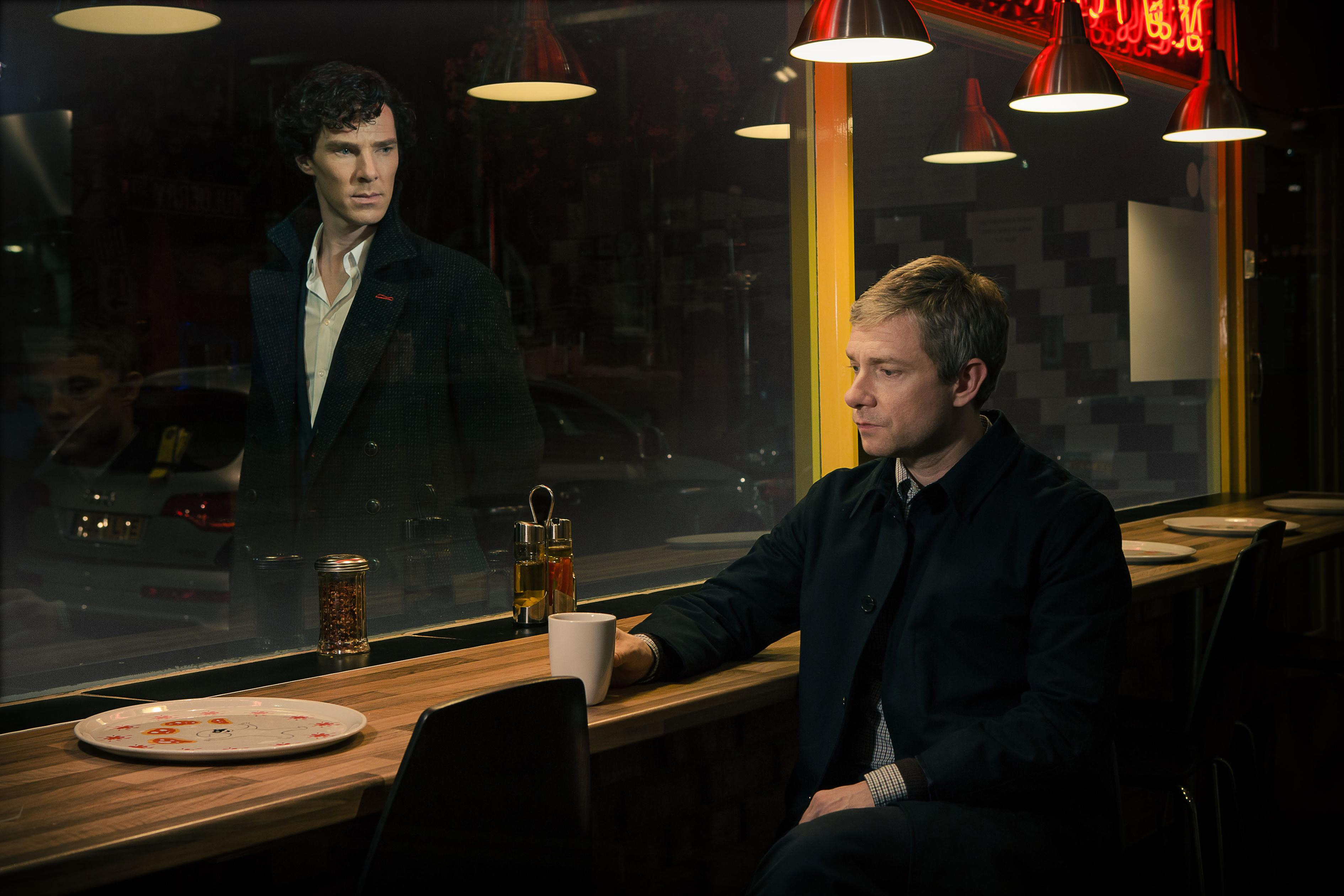
13/02/2014, by CLAS
Shifting Sherlocks
Warning: the following blog contains spoilers for series three of Sherlock.
Shortly after the first series of the BBC series Sherlock I contributed to an edited collection examining the series. My chapter was inspired by the almost simultaneous release of the Benedict Cumberbatch starring series, the Robert Downey Jr starring film, Sherlock Holmes (dir. Guy Ritchie), and a ‘mockbuster’ Sir Arthur Conan Doyle’s Sherlock Holmes (dir. Rachel Lee Goldenburg), which saw the titular detective pitted against dinosaurs and sea monsters. In the chapter I argued that the character of Sherlock was transformed for each iteration, leading to three distinct, but still recognisable, version of the character. Like Sherlock executive producer Stephen Moffat’s other fictional ward, The Doctor, Sherlock had become a character who could be regenerated, as writers and actors took on certain personality traits and left others behind to create their version of Sherlock Holmes.
This was partially the result, I argued, of the distinct industrial contexts of each adaptation. Sherlock’s Sherlock is also the BBC’s Sherlock, wrapped up in the institution’s expanding policy for exporting content and combining high-quality productions with a perpetuation of British cultural heritage. The result was a Sherlock who was very 21st century, but still drenched in a sense of history, cultural pedigree and Victoriana, alienated from the modern world by his arrogance and mild sociopathic tendencies.
That chapter was based on a single series of Sherlock, a mere three episodes. Fast-forward three and a half years and the quantity of the BBC’s Sherlock Holmes at our fingertips has tripled (and yet another version has come along in US network CBS’ Elementary). What becomes apparent in the recently aired third series, even more so than the second, is both a transformation in Sherlock’s character and a greater focus on the very issue of characterisation. The first two episodes concentrated far less on who- and how-dunnits and more on who Sherlock and John are, both separately and together. ‘The Empty Hearse’ saw Sherlock confronting the emotional consequences of his faked death on John, while ‘The Sign of Three’ saw him positively embrace his personal limitations and deliver an emotionally charged best man’s speech. Granted said speech also allowed him to figure out that someone was being slowly murdered. But that became almost secondary to Sherlock’s personal revelation that his relationship with John was changing, and that such a change would have a greater impact on his own wellbeing that he had previously thought. The series finale ‘His Last Vow’ similarly focused on how both men deal with the revelation that John’s new wife, Mary, is an assassin. The villain, Charles Augustus Magnussen, is in many ways simply the catalyst for Sherlock and John to re-evaluate who they are and what they’re prepared to do for the people they love. The climax, and Magnussen’s death, is punctuated with Sherlock declaring the kind of character he is: ‘I’m not a hero, I’m a high-functioning sociopath’.
So in many ways the most recent series of Sherlock demonstrates a continuation of the way the character is mutable and changeable. But it also demonstrates the continuing importance of positioning narrative production its industrial context. The greater emphasis on Sherlock and John as characters is unsurprising when you consider the increased status of Benedict Cumberbatch and Martin Freeman. Both have seen their profiles rise to almost stratospheric heights thanks to films such as Star Trek Into Darkness and The Hobbit franchise. As a result, both are immensely valuable assets for Sherlock as a series and the BBC as an institution. Both are recognised far beyond the UK and are gaining the additional meaning and cultural value that stars carry with them. Having them loyally declare their desires to return to the series for as long as possible (here, here and here) gives Sherlock both publicity and status as a high quality production, capable of attracting in demand actors. It is perhaps unsurprising then that the third series emphasised the two actors, their characters and their relationship. When you’ve got a combination of Sherlock Holmes/Benedict Cumberbatch and John Watson/Martin Freeman, it’s worth shouting about it.
Elizabeth Evans, Department of Culture, Film & Media
No comments yet, fill out a comment to be the first

Leave a Reply